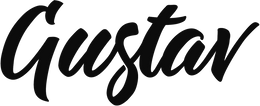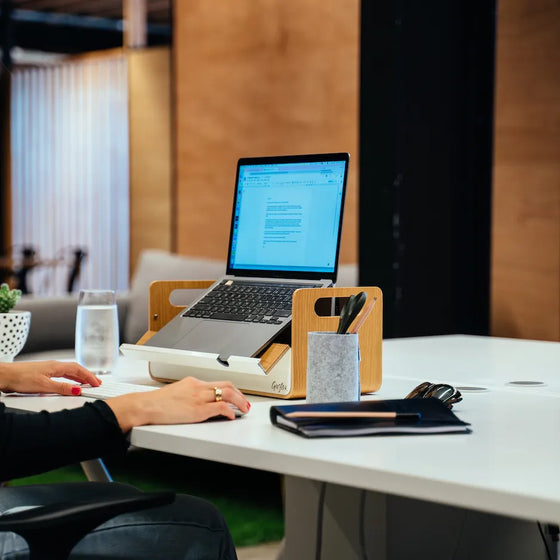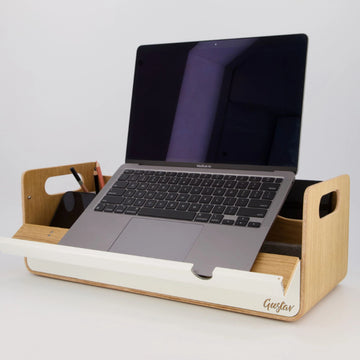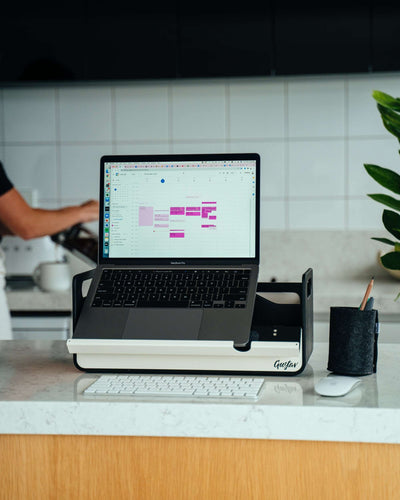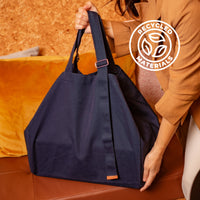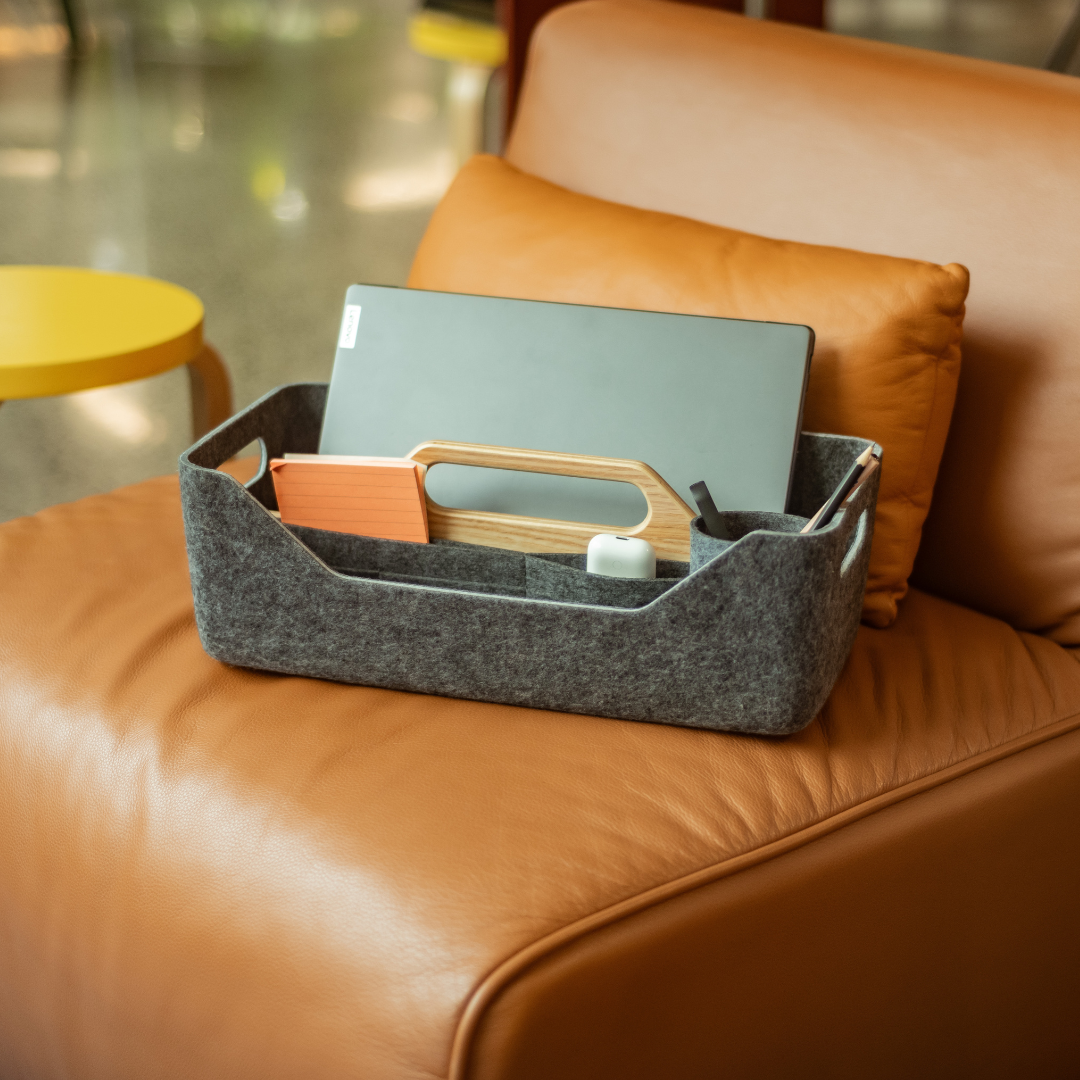Interview with Christian Pistauer
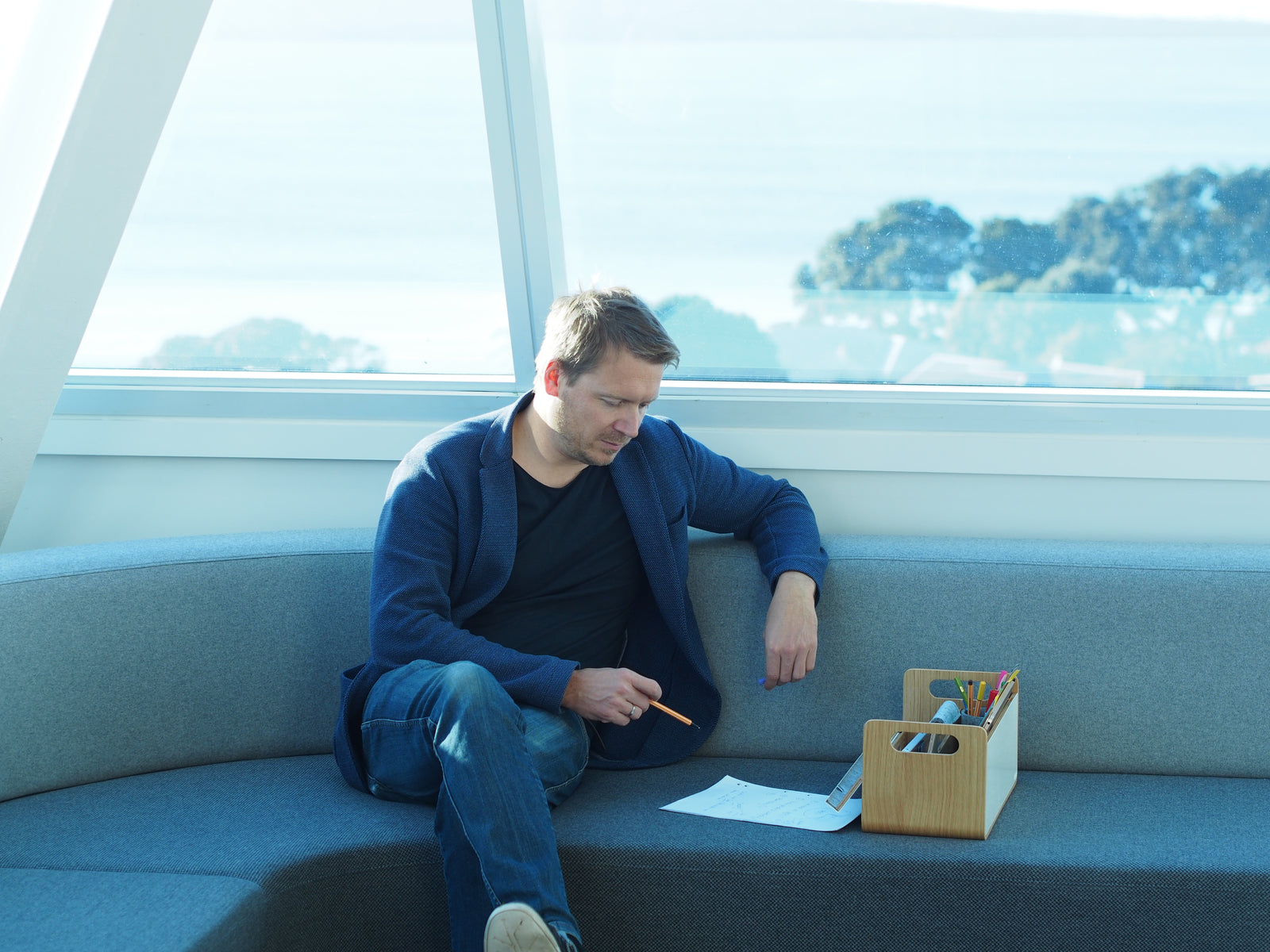
In 2014, the idea for Gustav was born: an office toolbox that facilitates everyday work in the modern office. A design and concept that had not existed before. But how did the idea for Gustav come about, and how can a simple design help Activity Based Working and Hybrid Work get off the ground? Gustav co-founder Christian Pistauer in an interview with New Work expert Barbara Oberrauter.
Barbara: Chris, you are an architect and workplace strategist. To put it simply, why do we need tools like Gustav?
Christian: Gustav is our answer to a working world that is becoming increasingly agile and flexible. Let's take the example of activity-based working: it is not yet so widespread in German-speaking countries. The Netherlands, in particular, is a pioneer. The company Veldhoen invented the concept of activity-based working and brought it to Australia and New Zealand.
One of the first projects was Macquarie Bank in Sydney, and now almost 80 per cent of companies nationwide have adapted such flexible working and design concepts. I was there live as a Workplace Consultant at the time and came across a common problem of ABW: As a mobile worker, what is the best way to transport all my necessary stuff from A to B?
B: And that was the birth of Gustav?
C: Not quite yet. However, the idea of finding a solution to this problem with my design stuck with me after that. Because at that time, about ten years ago, there were no related products on the market. I remember that I was on my honeymoon in 2014, and I said to my wife: "I want to return more to my roots as a designer. There's this design competition by Herman Miller for product proposals around the theme 'The New office Nomad'. I'd have a lot to say about that."
And so I submitted my idea there. The main thing for me was to find a tool for the new office concepts that would make it easy to take all the things lying around the office with you. At that time, I didn't intend to turn it into a laptop stand. Something like an office toolbox was a utopian idea at that time; in that sense, we were ahead of our time.
B: What was the actual process of creating Gustav? Did any design models guide you?
C: There were actually no design models for Gustav. There were no comparable products. I am definitely a designer whose home is minimalism and simplicity. And my design mantra is: simple is the goal and not the starting point of a design journey.
The simple design also doesn't show how much know-how and different work processes are behind it. We designed almost every part for Gustav ourselves: The hinge is specially made in Taiwan according to our specifications, and the design for the business cards and felt parts was also developed by us. In fact, everything except for the screws and felt inserts is designed without templates just for Gustav.
Accordingly, the design process itself also took around two years until we had everything together as simply and perfectly as we had imagined it. During the process, I found at least 30 ways of not building Gustav :)

B: You are a designer, architect and workplace strategist. How would you describe Gustav from these different perspectives?
C: A good, simple product is so reduced in form and function that it expresses the absolute essence. And that's what we've achieved with Gustav: every part has its reason why it looks and functions like this and not differently. For me, that's what design is all about - reducing things to the essentials. I believe that this is the only way to create timeless objects and that Gustav deserves this designation.
Another strength of Gustav is that you can sit anywhere in the office and work in an ergonomically correct way - you don't need a desk. You can even sit in the kitchen. Here, ergonomic design and workplace strategy go hand in hand. The focus in the office is moving away from the individual workstation and towards flexible collaboration.
Workplaces must be viewed holistically: People, Place and Technology. As an architect and workplace strategist, I look at how the work environment, the technology and tools are and how the people in a company behave. Then I ask the question: What rules of the game need to be set in order to bring these three fields together and develop a strategy that fits the company? The concrete workplace design must fit with the company's goals and also take into account aspects such as employer branding, employee loyalty or the brand image. All this is then spatially translated.
B: Gustav has won several awards. What do you think convinced the juries about Gustav?
C: To have an award-winning product, you need a certain aesthetic, of course, but also functionality, combined with a topical issue - in our case, workplace transformation - and a clever solution that hasn't existed before. There is no product in the world that can compete with Gustav - that creates an aha effect and makes an impression on juries.
In the beginning, Gustav was a completely new product category. If you called the furniture dealer and asked for something like an office toolbox, you didn’t get an answer at first. That shows how innovative this kind of product is - similar to the new categories for work models: New Work, Activity Based Work, Lean/Agile Work etc... There are not so many empirical values there yet, and I am curious to see where the journey goes.

B: Speaking of empirical values, what experiences have you had with your corporate cooperations so far?
C: Our corporate clients are now quite international. The first big order was from Adidas in Shanghai and Johnson and Johnson in Portugal. Gustav has proven itself for smaller companies, SMEs as well as larger companies. It's certainly a new product to get used to at first, but the demand is definitely there.
Hybrid working, i.e. the mix of home office and office, is now a big topic - international corporations in particular often have a 50/50 model today, while an office-first strategy with 3-4 weekdays in the office predominates among SMEs. Gustav has a big future. In Europe, the changeover process to Agile Work is just beginning - in terms of timing. We are right on time with our product.
B: What major challenges do you see for the office world in the future - and how can Gustav help to overcome them?
C: Not every company is equally well-positioned to implement hybrid working. People want to go back to the office, but they also want to have certain flexibility there, like at home or mobile working. Activity-based working is a great solution, but getting there takes time, energy and effort. It is important that the management is fully behind the solution and then practices it itself - no open offices with individual rooms for the executive floor. The transformation towards ABW and more flexibility can happen in small steps, but it must be well thought out and not half-hearted.
Gustav is the ideal tool for such change management challenges: Firstly, it solves a practical problem for companies, offers employees a clear solution with an ergonomic advantage and provides the additional feel-good factor in the office through the individual design options.
Not only can companies brand our Gustav and thus subtly place their brand in the office, but employees also succeed in switching more easily from a fixed workplace to modern forms of collaboration and thus arrive in today's working world.
